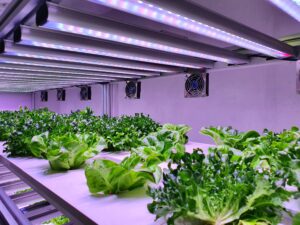
Heading Level 4
As we gear up for another gardening season, the buzz around seed starting is palpable. It’s that time of the year when our windowsills transform into miniature nurseries, but there’s always the question looming: do we really need those fancy grow lights? Let’s delve into the world of seed starting and illuminate the debate.
Picture this: tiny seeds nestled in soil, waiting for that magical moment when they burst forth with life. To make this happen, we need the right conditions. Temperature, moisture, and soil quality play crucial roles, but let’s not forget the importance of light.
Now, let’s talk grow lights. These aren’t your average bulbs. They come in various flavors—fluorescent, LED, and even incandescent. What sets them apart from regular lights is their ability to mimic the sun’s spectrum, providing the right wavelengths for plant growth.
Different Types of Grow Lights
– Fluorescent Lights: These are the OGs of indoor gardening. They’re affordable and emit a broad spectrum of light, making them great for seedlings.
– LED Lights: The new guy on the block. They’re energy-efficient and offer customizable spectrums, allowing you to tailor the light to your plants’ needs.
– Incandescent Lights: While not the most efficient, they still have their place. They emit a lot of heat, which can help with germination, but they’re not ideal for long-term use.
Now, let’s decode some jargon to better understand light measurements:
– Lumens: This measures the total quantity of visible light emitted by a source. More lumens mean more brightness. This also means the more lumens you have the farther they can be away from the plants, which often means you can use fewer fixtures.
– Kelvins: This indicates the color temperature of the light. Lower kelvin values (around 2000K) produce warm, reddish light, while higher values (around 6500K) produce cooler, bluish light. You want something around 5000K for most seedlings.
– Watts: This measures power consumption, not brightness. A higher wattage doesn’t necessarily mean more light. But pay attention to this so as not to overload your electrical system and help keep your energy costs reasonable.
So, do we really need grow lights? Well, it depends. If you’ve got a sunny spot in your home where your seedlings can bask in natural light, you might be golden. But for those in dimly lit spaces or facing long winters, grow lights can be a game-changer.
Before you dive headfirst into the world of grow lights, take stock of your space. How much natural light do you get? Where can you place your seedlings to maximize exposure? And if you do opt for grow lights, consider factors like intensity, spectrum, and duration to ensure your plants thrive.
As we embark on this journey of seed starting, let’s remember that there’s no one-size-fits-all solution. Whether you’re a seasoned gardener or a newbie with a windowsill garden, experimentation is key. So, let’s embrace the light, quite literally, and watch our seeds grow into thriving plants.
“A blockquote highlights important information, which may or may not be an actual quote. It uses distinct styling to set it apart from other content on the page.”

Dan Westwood
Master Gardener
